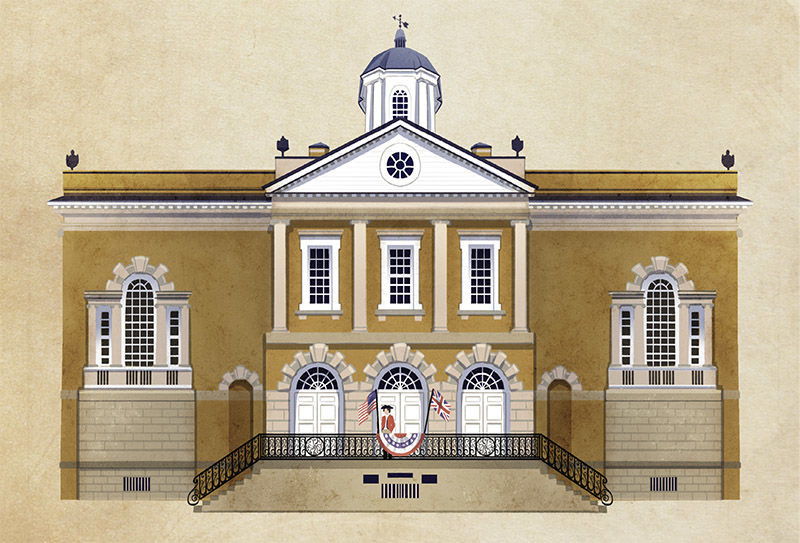For more than 260 years, this iconic building has served as a commercial exchange and custom house, watch house, public market, post office, city hall, and Revolutionary War jail, as well as a military headquarters for British, American, and Confederate armies.

Owned by the Rebecca Motte Chapter of the South Carolina State Society of the Daughters of the American Revolution, the Old Exchange was designated a National Historic Landmark in 1973 and now serves as a museum operated by the city.
Custom Made - In 1767, the Commons House of Assembly voted to build a new “exchange and watch house” on the site of the old Half-Moon Battery at the foot of Broad Street. Designed by Anglo-Irish architect William Rigby Naylor and built by German master masons John and Peter Horlbeck, it was one of the largest public buildings in the colonies when it was completed in 1771. Within its grand halls, deals were made, duties were collected, and goods were bought and sold.
Presidential Platform - The property was center stage during President George Washington’s1791 visit to Charleston. Washington delivered a stirring address from the balcony overlooking Broad Street, and the majestic halls hosted a string of elegant dinners, concerts, and a grand ball to honor the first president.
Changes at the Top - The cupola once served as both a watchtower and a maritime range marker. The original dome was damaged by a hurricane in the early 1800s, and the second was lost during the 1886 earthquake. It wasn’t until renovations in 1981 that the present cupola was placed atop the Old Exchange’s roof.
Supporting Services - In the late 1800s, the building housed the US Lighthouse Service. During World War I, it was used as headquarters for General Leonard Wood, commanding the Southern District. During World War II, the structure operated as a USO facility as well as the Coastal Picket Station for the Sixth Naval District of the US Coast Guard, which patrolled Lowcountry waters for German U-boats.
Public Venue - Through the 18th and 19th centuries, the site operated as a venue for sheriff’s sales and public auctions of land, property, and other goods. Prior to 1865, enslaved African Americans were sold at auctions in an open space north of the building
Dungeons & Dragoons - When Charleston fell to the British in 1780, the structure was taken over by British troops, and the provost marshall (or head of the military police) designated a portion of its basement as a jail. In the dungeon’s dark confines, American soldiers, private citizens, enslaved people, and even some British soldiers suffered harsh incarceration. Now part of the museum, the Provost Dungeon is also the only place where you can see a portion of the Half-Moon Battery, part of the original city wall discovered during renovations in 1965.